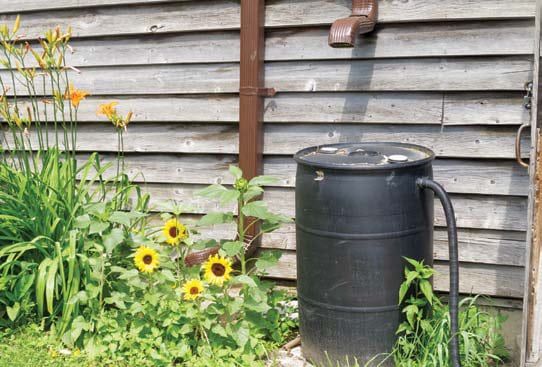As municipal officials turn to the cost-savings and environmental and social benefits of green infrastructure, there’s one important factor that can mean the difference between success and failure: community buy-in.
How do you convince residents not only to buy-in to green infrastructure, but to green their own homes and businesses? Residents need to get informed, get involved and get green.
Get informed
Green infrastructure can have an immediate impact on – and be immediately visible in – communities, while a storm water sewer may take years to fund and build. In addition, since green infrastructure is more cost efficient, it can mitigate increases in water rates, which is attractive to residents. For example, Philadelphia chose a green infrastructure system that officials estimate will cost $1.6 billion over 25 years – a savings of $4.3 billion over a grey system.
While green infrastructure also can mitigate water costs, if your municipality has storm water fees based on the amount of impervious surface on a property, like Washington, D.C., it also can save your residents money. D.C. gives residents credits when they install green infrastructure, such as rain barrels and cisterns, on their properties, and resident even may sell excess credits to third-party buyers.
In addition, residents could see a boost in their property values – the closer a home is to a greenspace, the more valuable it is, studies have shown – according to Smart Money Magazine, a home’s value can increase by more than 11 percent when it’s near a greenspace.
Green infrastructure is a good investment for commercial properties as well. Adding landscaping, such as a water garden, increases the average rental rate by 7 percent and shoppers spend an average of 8 to 12 percent more in shopping districts with tree canopies, according to the Natural Resources Defense Council.
In some cases, it’s not about the money for residents, but the social benefits of green infrastructure. Tree canopies can reduce urban heat islands and improve air quality, while water gardens and green roofs mitigate flooding and improve water quality. In addition, having access to greenspaces, especially in densely populated areas, have positive psychological effects.
There are several ways to introduce green infrastructure to residents, such as hosting a community clean up or a River Sweep, garden preparation or planting; holding a tour of another green infrastructure site or water or sewer treatment plant; or holding a program or hosting a lecture featuring a green infrastructure expert. With more community engagement, the more knowledgeable residents will be, communications between officials and residents will improve and trust will build.
Get Involved
When launching a project in a community or neighborhood, facts and figures are useful, but getting local groups, whether they’re nonprofits, local schools or service groups, to partner with municipal leaders can get you even further. Both can bring different, valuable ideas and expertise to the table.
In the case of a community cleanup, municipal leaders have resources such as trucks to pick up garbage and bags to collect it, while community groups are skilled at organizing and rallying volunteers.
Partnerships can be unlimited: Partner with an art association to paint a mural or install a temporary exhibit in a greenspace or park; community groups to plant gardens and urban farms; a school to teach children about environmental science; and gardening clubs to provide educational programs.
What you can do with green infrastructure as a framework is only limited by who you can bring to the table. As noted above, the more partnerships you leverage, the more trust you will build in the community. As greening takes effect across neighborhoods, residents will begin to see the social benefits of green infrastructure.
Get Green
Once your residents are informed and involved, it’s time for them to take ownership of the projects in their neighborhoods and even begin their own green infrastructure projects.
Baltimore allows residents to adopt lots to create community gardens and urban gardens, turning formerly vacant, abandoned lots into community greenspaces. On their properties – especially if storm water reduction credits are available – they can incorporate their own green infrastructure improvements.
Such improvements can include rain gardens, planting trees, green roofs, permeable paving and rain barrels. Making improvements to their homes not only will reap financial and social benefits, but environmental, including improvements to air and water quality, improving climate resiliency and creating urban wildlife habitats.
Working with residents to educate, leverage partnerships and incorporate green infrastructure across the board shouldn’t be a minor detail of your green infrastructure plans, but the cornerstone. Building social acceptability for it should be part of your plans from the very beginning.
The NLC Service Line Warranty Program is proud to partner with more than 650 municipalities to offer important protection to residents. Contact us to learn more about how program can benefit your community!

